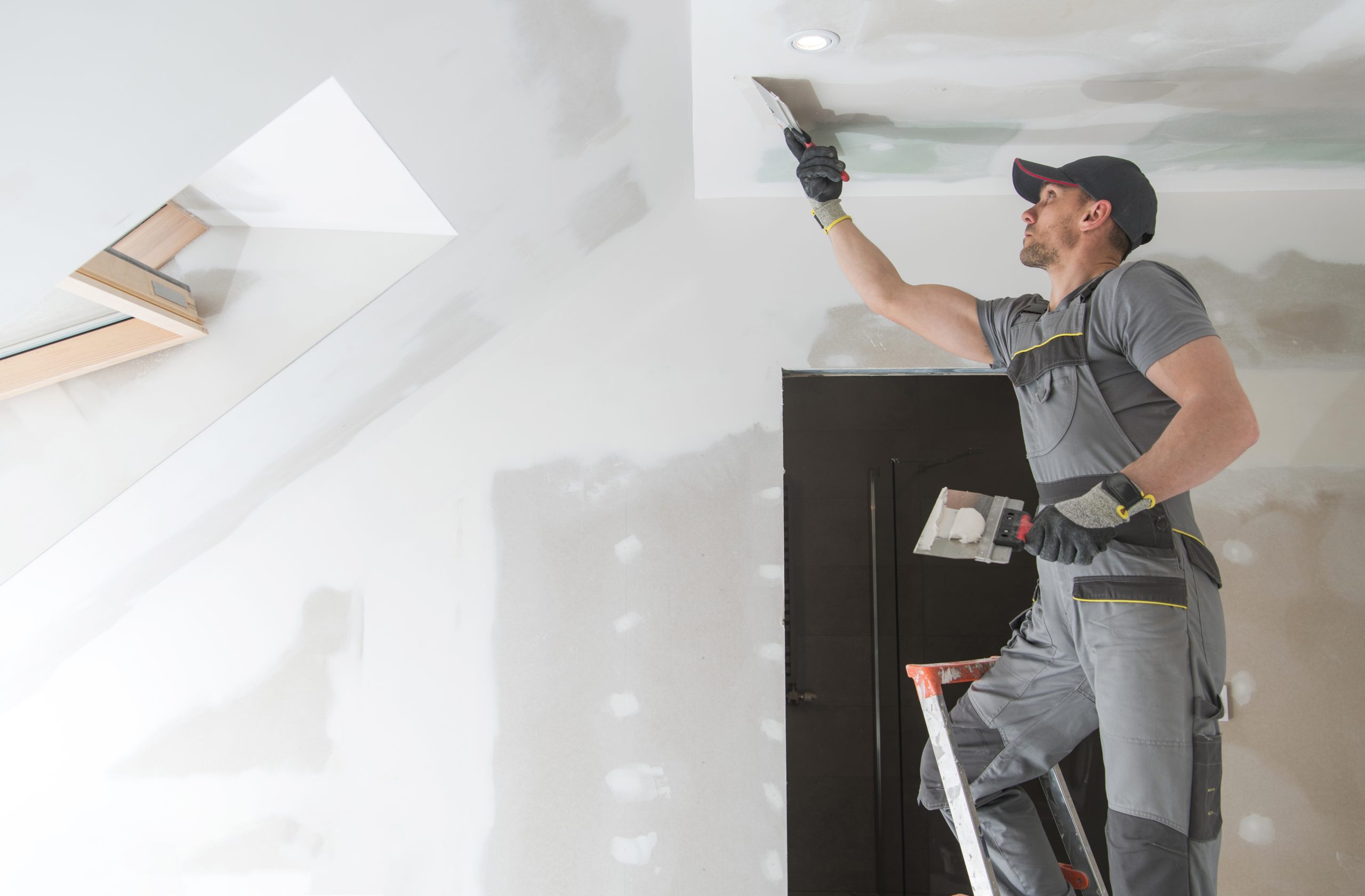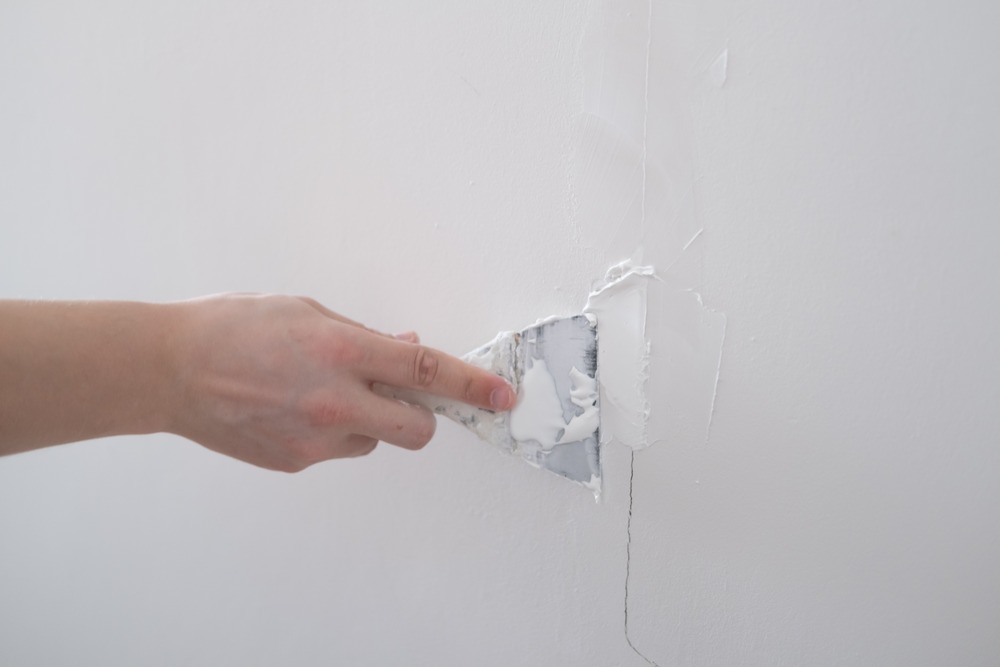Build a balanced home aesthetic with drywall contractors and vibrant Interior Painting.
Step-by-Step Approaches to Getting Flawless Drywall Repair and Installment
Attaining remarkable drywall fixing and installment calls for an organized method. It involves understanding the various sorts of drywall and the tools needed for the job. Proper area preparation is crucial before starting any job. Interior Painting. Each action, from patching holes to mounting brand-new sheets, needs interest to detail. The process doesn't end with installment; finishing strategies are vital for a polished appearance. The next steps will guarantee a smooth outcome, but what exactly do they involve?
Understanding Drywall Types and Equipment Needed

The setup tools are similarly vital. An utility blade is essential for cutting drywall sheets, while a drywall saw can aid in making specific cuts for outlets or components. T-squares guarantee accurate dimensions, and drywall screws or nails secure the panels to wall surface studs. In addition, a drywall lift can facilitate the installation of big sheets, minimizing physical stress. Knowledge with these tools and types substantially adds to the effectiveness and high quality of drywall projects.
Preparing the Area for Fixing or Installment
Preparing the location for drywall repair work or installation is essential to ensure a smooth and effective process. Initially, the surrounding room should be cleared of furnishings and other barriers to supply sufficient working space. This not only guarantees security but additionally avoids damages to items. Next, it is vital to cover the flooring with decrease fabrics to catch any debris or dust produced throughout the job.
In addition, the walls should be examined for any type of loosened paint or wallpaper that may interfere with adhesion. Getting rid of these aspects develops a tidy surface for the brand-new drywall. Before beginning, it is recommended to shut off power to electric outlets or components in the location. Making certain adequate lights in the work area will certainly additionally enhance exposure and emphasis throughout the fixing or setup process. drywall contractor. By carefully preparing the area, one prepares for a successful drywall project
Step-by-Step Process for Patching Holes

Patching holes in drywall requires an organized strategy to assure a seamless repair. The initial step involves examining the size of the hole. For tiny openings, a patching substance may be sufficient, while bigger openings necessitate a spot. Next off, the damaged area needs to be cleaned up and prepared by eliminating any type of loose debris.
For tiny holes, applying spackling substance with a putty blade is advised, smoothing it over the hole and feathering the sides. As soon as completely dry, fining sand the area guarantees a smooth finish. For larger holes, a drywall patch must be reduced to dimension, placed over the opening, and secured with screws. After mounting the patch, the same spackling procedure is duplicated, followed by fining sand.
Lastly, the patched area should be primed and painted to match the surrounding wall surface. This thorough process guarantees a specialist look and extends the lifespan of the repair service.
Setting Up New Drywall Sheets: A Comprehensive Overview
Installing new drywall sheets requires careful preparation and execution to ensure a durable and visually enticing coating. The location has to be measured properly to establish the number of sheets needed. It is vital to pick the best thickness, typically 1/2-inch for interior walls and 5/8-inch for ceilings or fire-rated applications.
Next off, the studs or framework must be checked for any type of abnormalities, seeing to it they are lined up and properly spaced. When positioning the drywall sheets, they need to be placed flat to lessen seams and enhance architectural honesty. A drywall lift can be advantageous for above installations.
Fastening the sheets with drywall screws at suitable intervals ensures a safe and secure setup. It is very important to countersink the screws slightly below the surface to get ready for the finishing procedure. Following these standards will result in a solid structure, prepared for the following actions in drywall ending up.
Completing Touches: Taping, Mudding, and Fining Sand Methods
When the drywall sheets are safely attached, the emphasis moves to the complements that will supply a polished look. This procedure starts with taping, using Drywall Repair Ogden UT either paper or fiberglass mesh tape to cover the joints in between sheets. The tape ensures a smooth change, reducing the risk of splitting. Adhering to taping, mudding is vital; a joint compound is used over the tape to fill voids and develop a smooth surface. Typically, multiple coats are necessary, each one feathery out further than the before decrease exposure.
After sufficient drying time, fining sand is the final action in achieving a flawless surface. A fine-grit sandpaper is used to smooth the dried out compound, ensuring there are no bumps or blemishes. Attention to detail throughout this phase is considerable, as it considerably affects the overall look of the wall. The end result ought to be an also, professional-looking surface prepared for priming and paint.
Often Asked Questions
How Do I Pick the Right Drywall Thickness for My Job?
To select the right drywall thickness, take into consideration the job's function, location, and structural demands. Requirement densities include 1/2-inch for general use and 5/8-inch for fire-rated applications, ensuring toughness and compliance with building ordinance.

Can I Mount Drywall Over Existing Drywall?
Yes, mounting drywall over existing drywall is possible. It is important to assure the underlying surface area is cost-free and safe and secure from damage. Proper attachment and factor to consider of density are crucial for a successful installment.
What Are the most effective Practices for Drywall Disposal?
The most effective practices for drywall disposal include recycling when feasible, using local waste administration services, and complying with guidelines for harmful products if applicable. Drywall Repair Ogden UT. Correctly labeling and sealing waste guarantees compliance and safety throughout disposal
How much time Should I Wait On Mud to Dry Before Sanding?
Typically, one should wait 24-hour for drywall mud to completely dry prior to sanding. Nevertheless, drying time can vary based upon humidity and temperature, so looking for a firm structure is recommended before continuing.
Are There Eco-Friendly Drywall Options Available?
Yes, environment-friendly drywall options are available. These choices usually make use of recycled products, low-VOC adhesives, and sustainable production approaches, minimizing environmental impact while giving efficient insulation and sturdiness for various building and construction and improvement jobs.
An utility blade is important for cutting drywall sheets, while a drywall saw can aid in making specific cuts for electrical outlets or fixtures. Preparing the location for drywall repair service or installation is important to ensure a smooth and efficient procedure. Covering openings in drywall calls for a methodical technique to guarantee a seamless repair work. Setting up brand-new drywall sheets requires cautious planning and implementation to assure a aesthetically appealing and durable surface. Yes, setting up drywall over existing drywall is feasible.